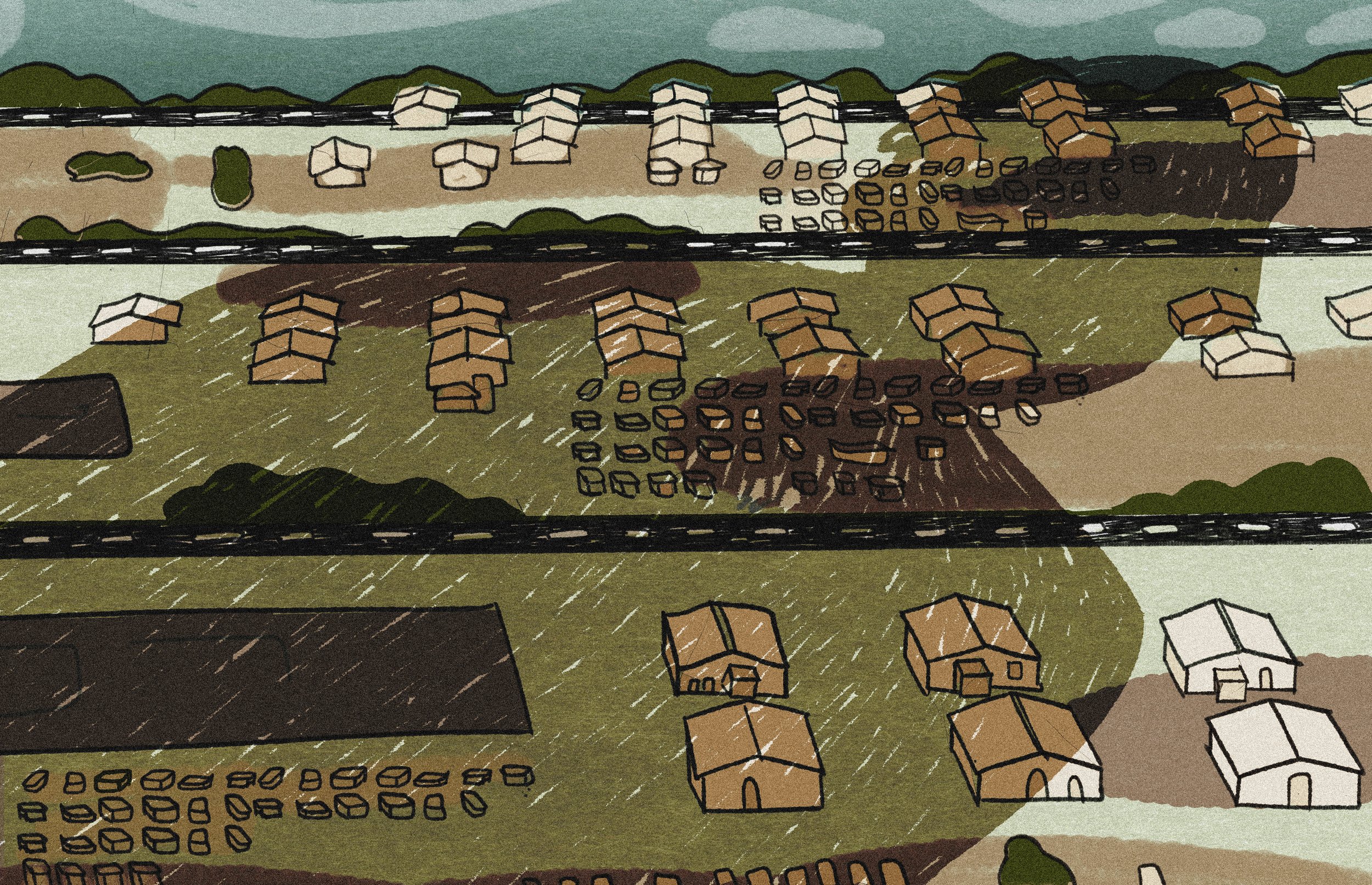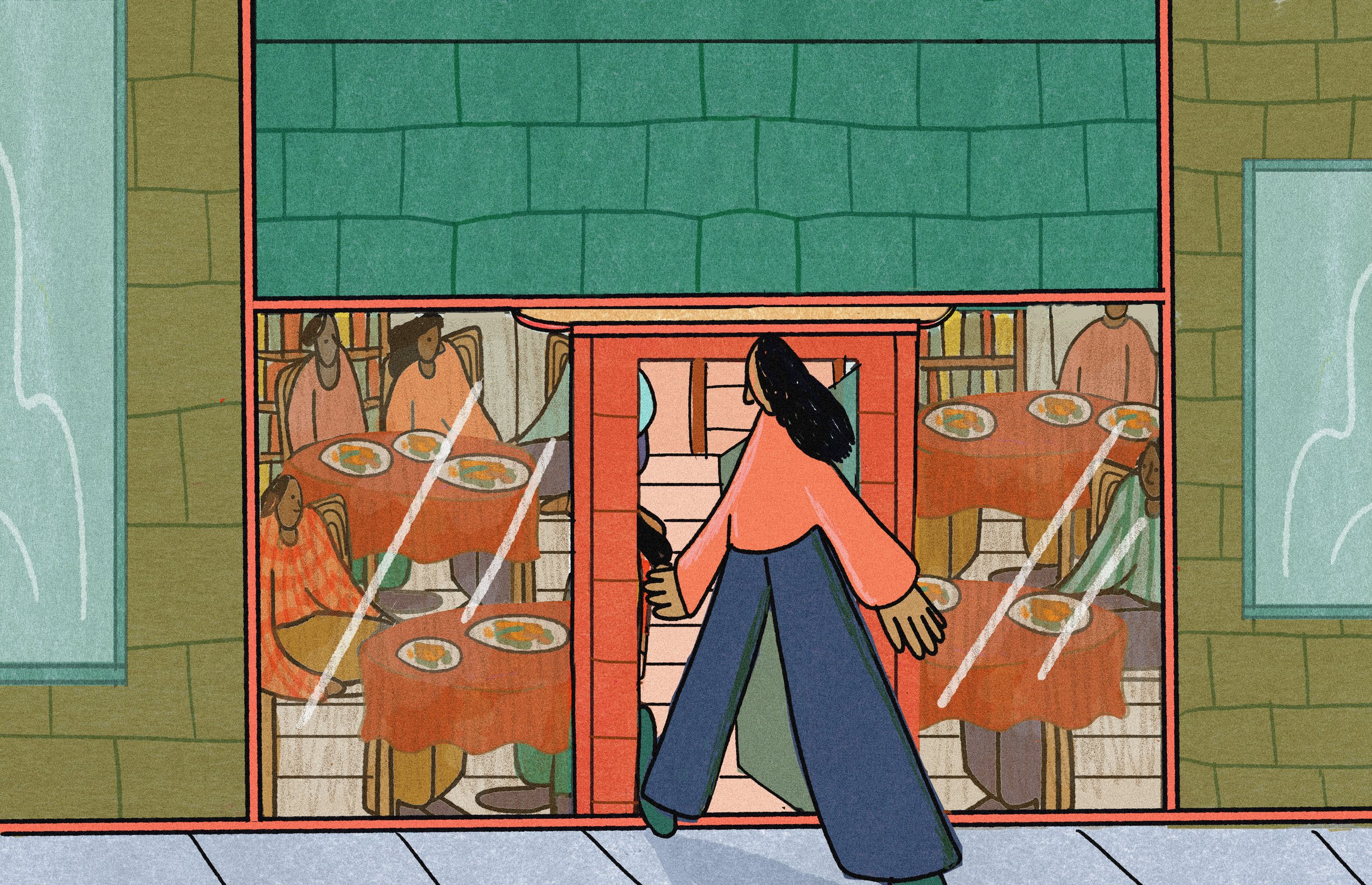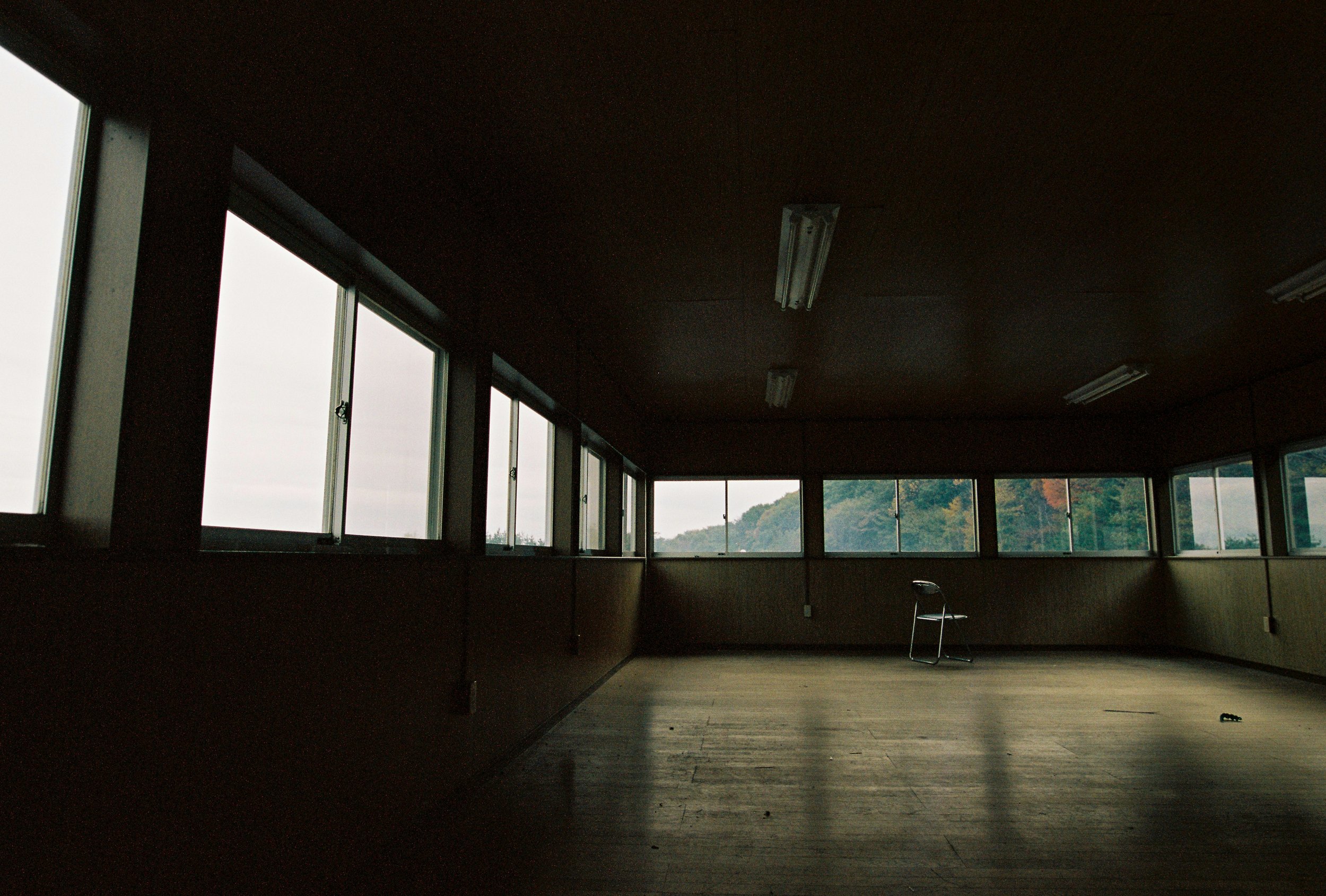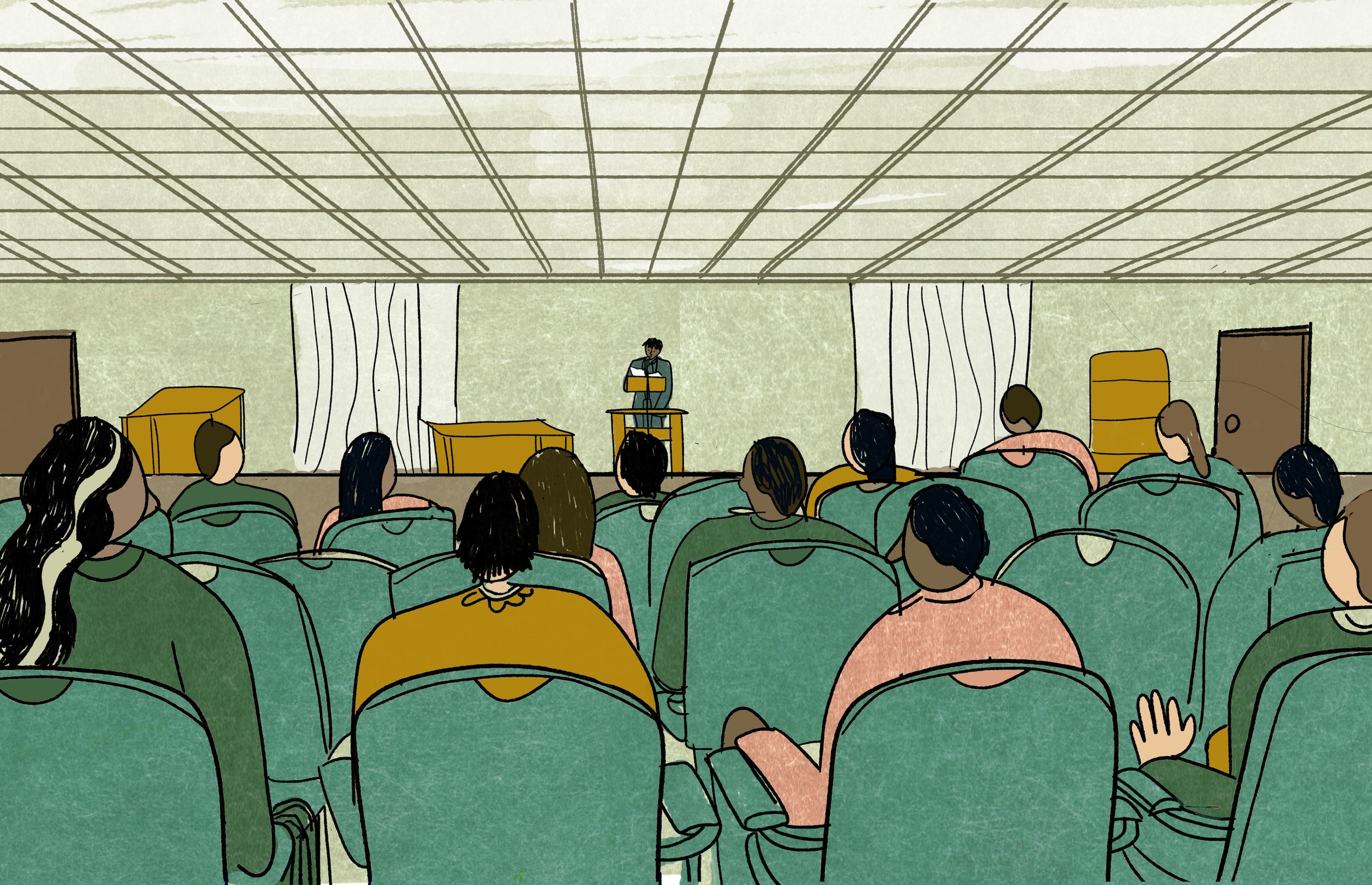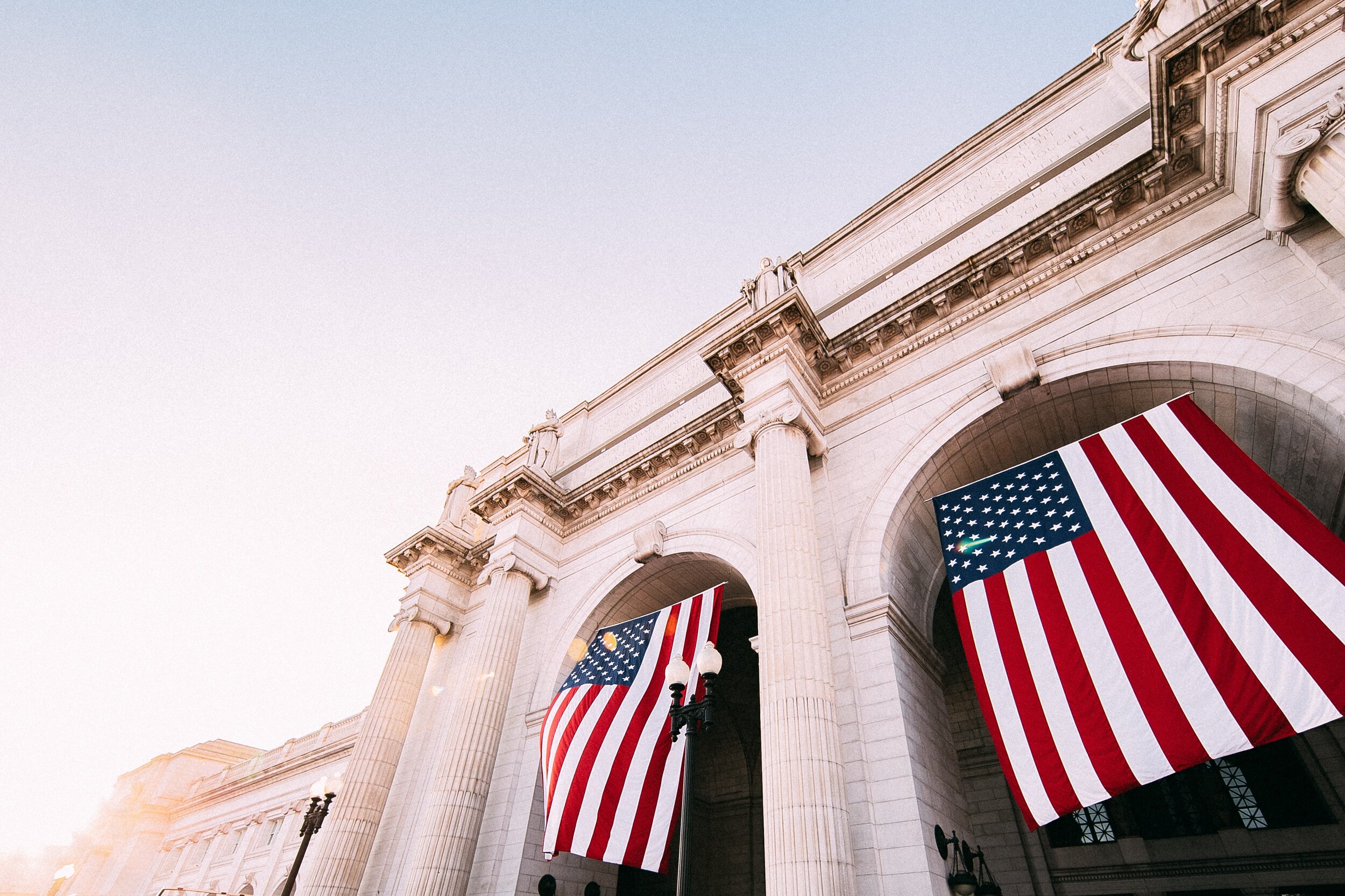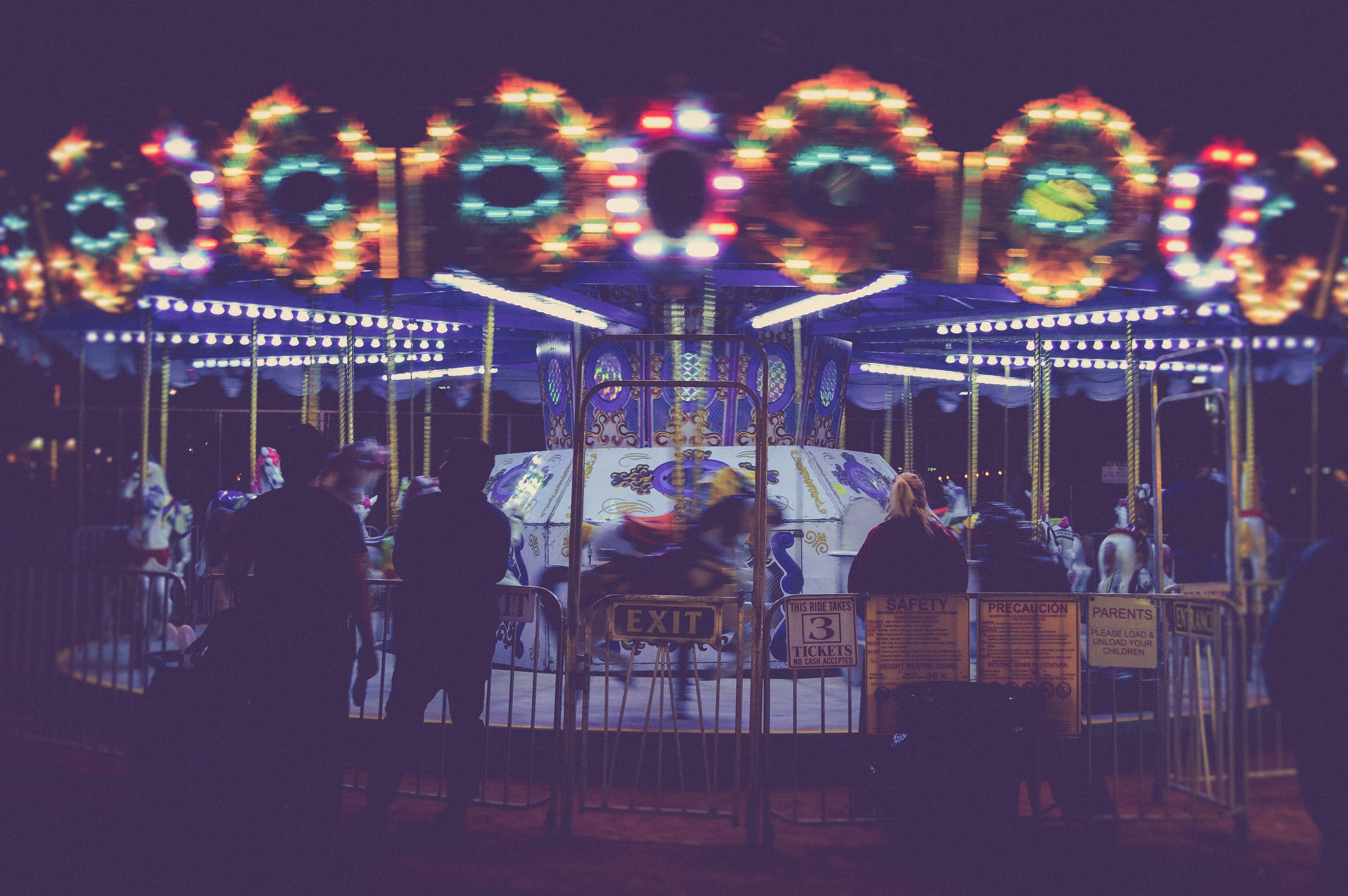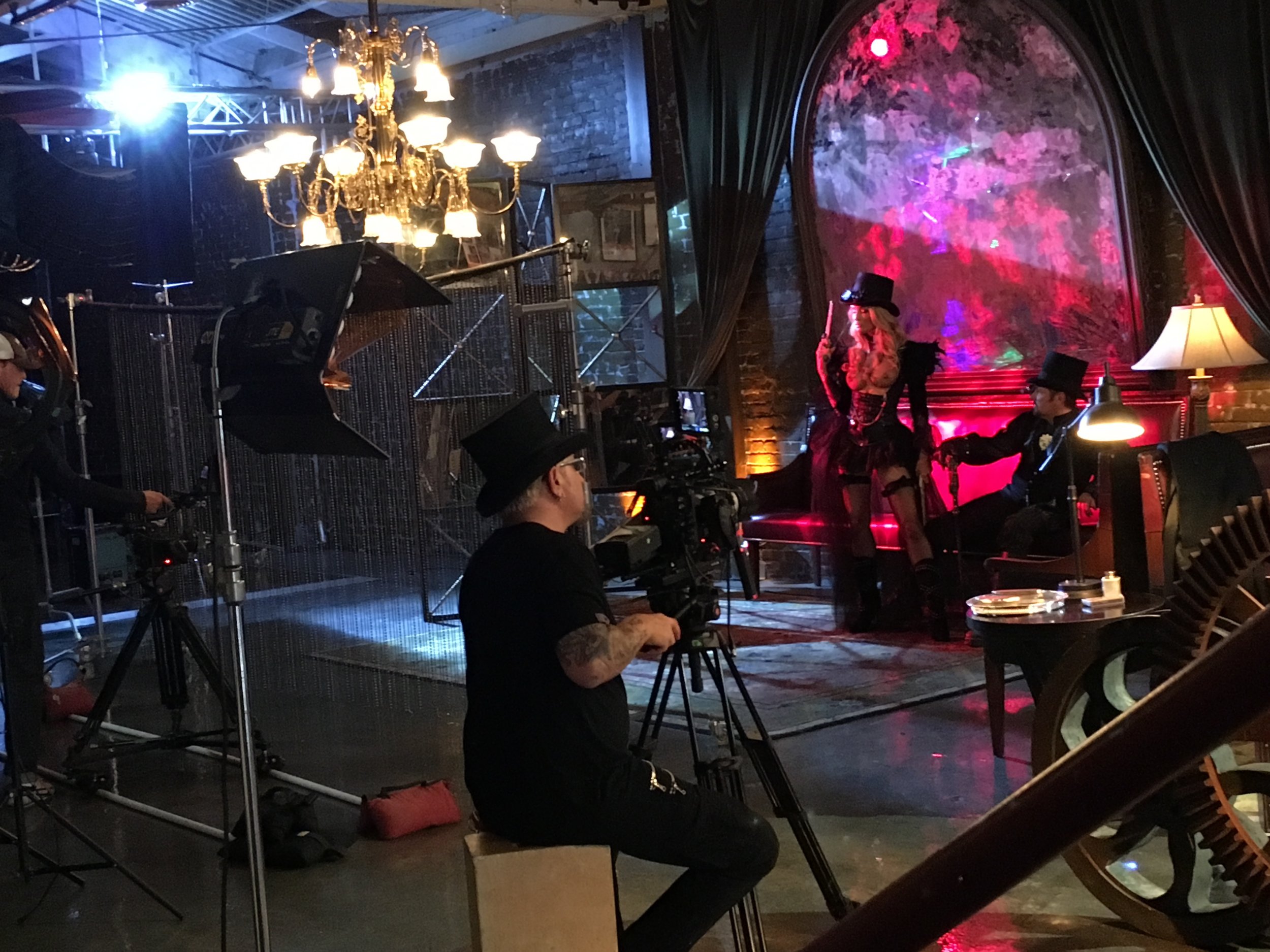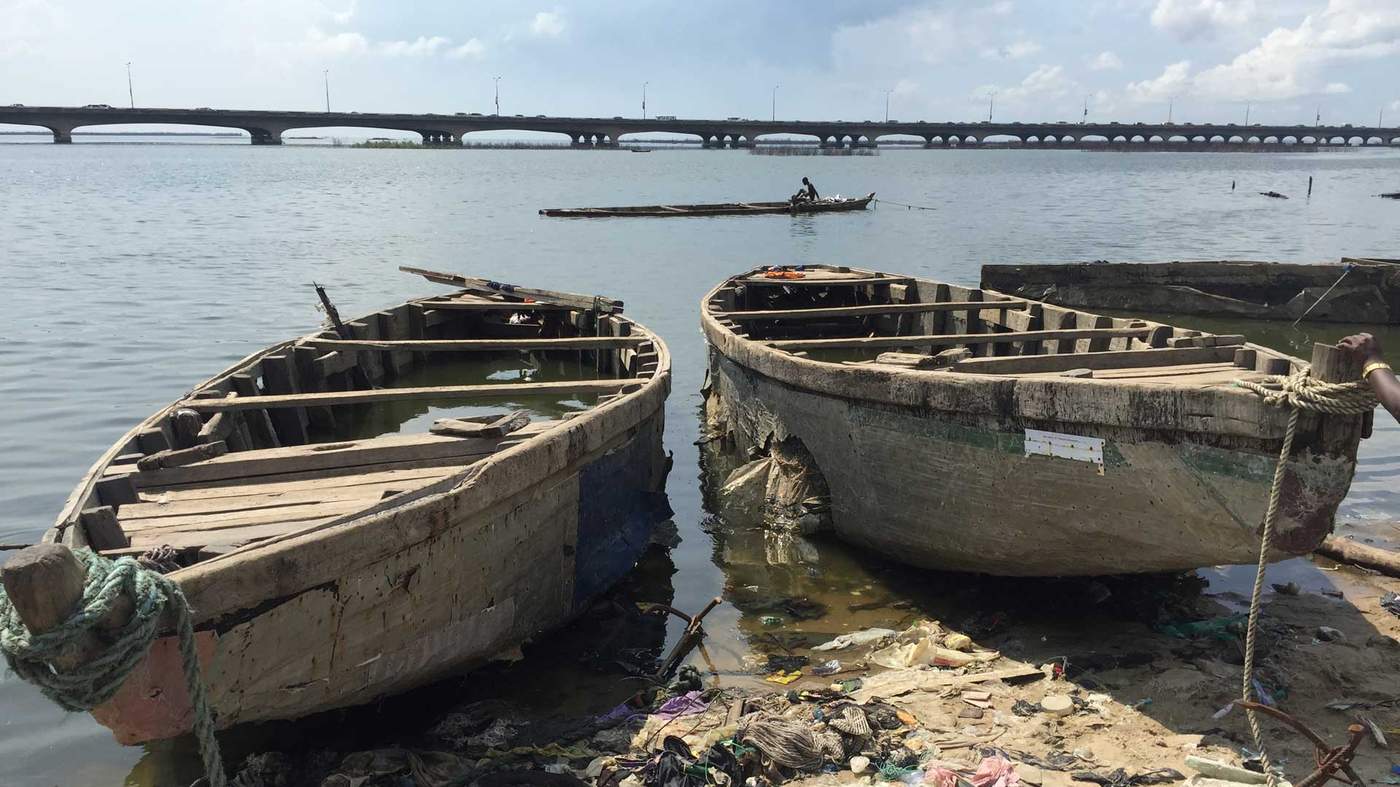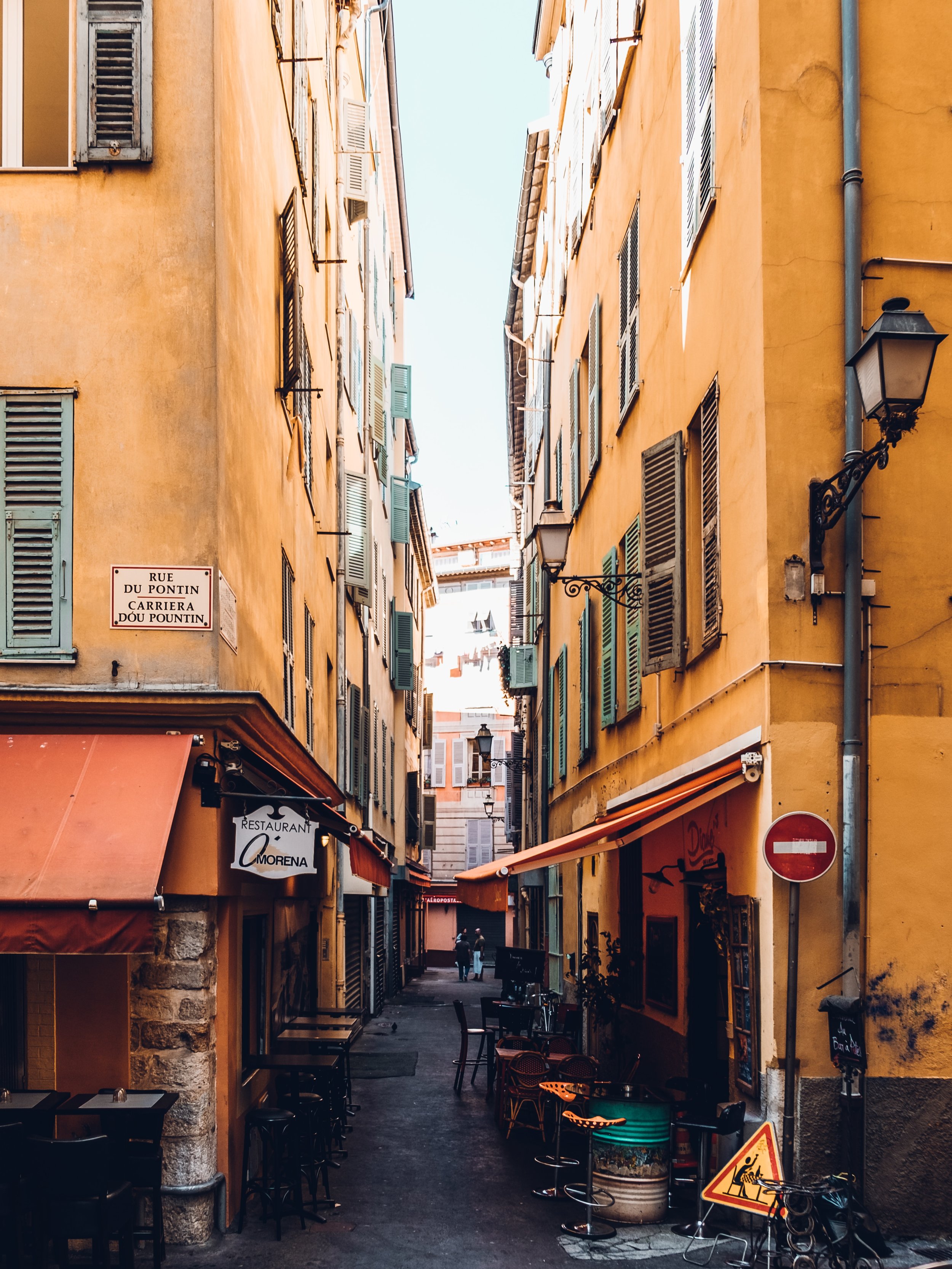Behind the Photos: Northern Mongolia Mining Camps
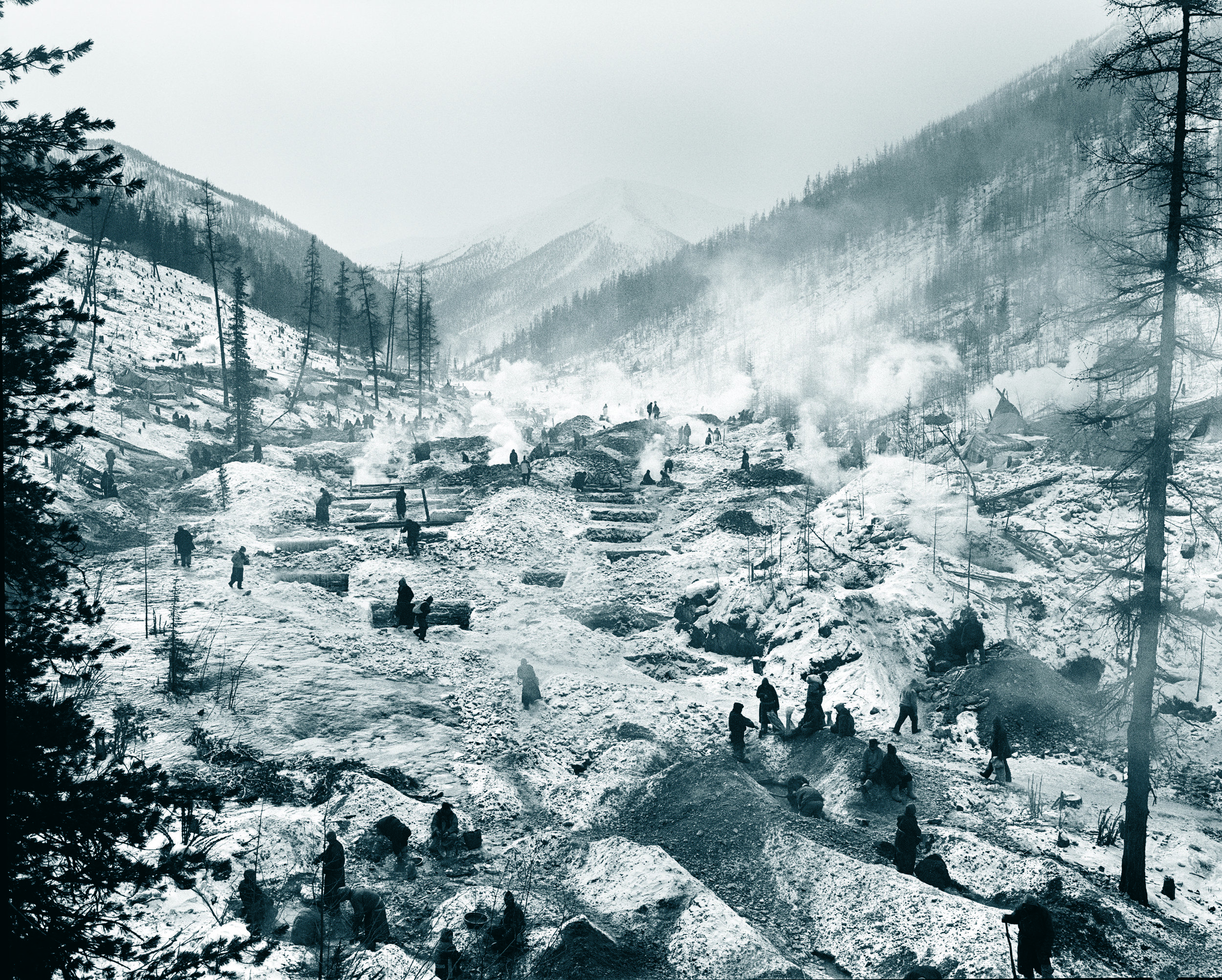
Andrew Rowat’s photography has been featured in GQ, Vanity Fair, and The New Yorker, among other publications. But capturing the elusive perfect shot can be arduous, or, at times, even life-threatening. Andrew sat down with OA’s Sam Benson Smith to tell us the stories behind one stunning folio of photos. This dialogue was edited for length and clarity.
Off Assignment: Where did you take these photos?
Andrew Rowat: In Northern Mongolia, in a valley where they do ninja mining—small-scale, artisanal gold mining. People call it ninja mining because the miners have these green plastic pans they use to pan for gold, and when they put them on their backs to walk between places, they look like Teenage Mutant Ninja Turtles. I’d heard about it, but knew it’d be tricky to reach. The camps were in a restricted zone on the border between Mongolia and Russia, along the Siberian border—very difficult to get to.
OA: So how did you get there?
AR: I flew from New York to Ulaanbaatar—it took about a day—and from Ulaanbaatar, my friends and I then drove for three days to a small town in the northern reaches of Mongolia. Keep in mind this is in February, dead of winter, Mongolia. It’s a part of the country where the Tsaatan people live. Tsaatan translates to “reindeer people.” These are the people who ride reindeer, who eat reindeer meat, use reindeer skin. They’ve been doing this for millennia—you can trace their pilgrimages back thousands of years across Siberia.
Anyways, I hired about four or five of the Tsaatan to help bring us into the ninja mining camps, and they brought about 20 reindeer along. And so, after having flown for a day, driven for three days, we now rode reindeer for three days in the dead of winter over moonscapes, and arrived in this place which was some hybrid of Mordor and Lord of the Flies. Reindeer bounded right up to us, like we’d just arrived at Santa’s workshop.
We learned pretty quickly that every time you had to go to the washroom, you had to be very careful, because urine has got all of these minerals, and the reindeer are pretty keen on that stuff in the winter. So—if you’re a guy, anyways—you’re out there, and all of a sudden, you’re having to contend with all of these reindeer charging at you with their antlers, and it makes an outdoor peeing experience a bit more dangerous.
OA: Did you actually camp there?
AR: Yes, but we didn’t have a tent. A couple nights they put out a tarpaulin—an urtz, similar to an American-style teepee. One night, I think we slept in that, but every other night, we’re outside, and one of the nights, it hits minus 53 Celsius, or minus 56. Very, very, very, very cold. Even for a Canadian.
We would put reindeer skins on the ground, and then on top of that, I put a down-filled air mattress, and then a sleeping bag that was rated to minus 40. I was wearing seven layers, and I had this Canada Goose Antarctic parka on top of everything, and slept with my water bottle inside of all of this, next to my body. One morning when I woke up, it was frozen solid. They called it the dzud—one of the worst winters in fifty years.
OA: Did the cold make it hard to shoot?
AR: Yes. You had to be very careful photographing with film, which I was. Because of the extreme cold, you had two issues. One, film can snap, so you have to wind it very, very slowly, so you don’t snap the rolls. And I did snap some rolls. The second issue is that extreme cold is also extremely dry: no humidity. You can generate static electricity as you’re winding your film, which means you get sparks, basically, on the film itself.
OA: How did they feel about you there, shooting?
Well, first of all, you had all of these folks—shepherds, primarily—who’d had all of their animals wiped out. They’d made the trek to the mining camps themselves—walked in or taken horses into the valley. Thousands of people spread out in this valley, across miles and miles.
It was every man for himself; there had been killings in the valley, a valley completely denuded of trees. In the middle of the vale. You had this river that was frozen. It’s easier to mine in the winter, because the flowing water is no longer flowing, so you chip down 10 feet, 15, 20 feet, through the frozen river to the riverbed below, and then you build a fire, and it melts everything down. So then you can get out this slurry that has the gold in it.
My assistant told me that some of these guys were asking where we were staying because “They want to kill you and take your boots.” Now keep in mind, I’ve taken a week to get to this place from New York City, and I’d planned to stay there for a week to shoot portraits. But my assistant pretty much says, “We need to go.”
OA: Yikes.
AR: You know when you’re on a plane and you’ve got bad turbulence, and you look at the flight attendants and if they’re still merrily chatting away, you’re like, “Yeah, all right. No problem,” and you go back to watching your movie or reading your book? But if they look white-knuckled, you’re like, “Uh-oh. This is a problem.”
That’s what was happening. I looked at our Mongolian friends, talking over the situation in Mongolian, and it was tense. They said to us, “Y’know what? The fact that you, this foreigner, are here—with boots, and whatever else—has spread like wildfire through the camp. We can’t spend the night. We need to get out of here.” I have no problem pulling the ripcord on things. Like if I’m a hundred meters from the summit of Everest, and they say, “This is the turnaround point,” I’m turning around. I’ve got no ego of any sort invested in that part of it.
OA: So what did you do?
AR: We said, “All right.” Packed up camp. And we rode on our faithful reindeer steeds 20 kilometers outside of that camp. And with every passing kilometer, you felt this weight coming off of your shoulders that you hadn’t even realized was there. Y’know the terrain, the cold—all of these things were challenging, but they were nothing compared to that fear that just enveloped you—enveloped me. In the presence of these guys, fear was just like a blanket.
And that night, as we made camp, we had some vodka and also got back something that had been missing—which, again, you didn’t realize until the moment it returned—and that was laughter. We started laughing again, and joking with each other, and the tension of that valley kind of melted away.
ABOUT THE PHOTOGRAPHER
Andrew Rowat has won the PDN’s 30 award for photography, and is based out of Toronto after stints in New York and Shanghai. His portraits have appeared in Vanity Fair and The New Yorker, his travel work regularly appears in Condé Nast Traveler and Travel + Leisure, and his architecture and lifestyle work finds its way into the pages of Wallpaper, Monocle, and Dwell. His profile features have appeared in Esquire and GQ.





